In the adjoining figure of a potentiometer arrangement, B is the main battery, C is the cell whose emf is to be determined, WW' is the potentiometer wire, G is the galvanometer and Jis the jockey which may touch any point on the wire WW'. Choose the correct alternativels for the potentiometer to work properly
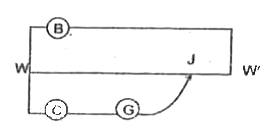
The emf of B must be greater than the emf C
Two batteries B and C must be joined so that the same polarity terminals are joined together
The positive terminals of two cells must be joined together to end W.
The galvanometer resistance must be less than the resistance of potentiometer wire
The correct Answer is:A, B
Step by step video & image solution for In the adjoining figure of a potentiometer arrangement, B is the main battery, C is the cell whose emf is to be determined, WW' is the potentiometer wire, G is the galvanometer and Jis the jockey which may touch any point on the wire WW'. Choose the correct alternativels for the potentiometer to work properly by Physics experts to help you in doubts & scoring excellent marks in Class 12 exams.
Updated on:21/07/2023Similar Questions
The figure shows a potentiometer arrangement. D is the driving cell, C is the cell whose emf is to be determined. AB is the potentiometer wire and G is a galvanometer. J is a sliding contact which can touch any point on AB. Which of the following are essen tal condition for obtaining balance?
View SolutionIn order to determine the internal resistance of a primary cell by means of potentiometer the emf of the battery connected across the ends of the potentiometer wire should be
View SolutionA potentiometer arrangement is shows in Fig. 6.62. The driver cell has emf e and internal resistance r. The resistance of potentiometer wire AB is R.F is the cell of emf e/3 and internal resistance r/3. Balance point (J) can be obtained for all finite value of
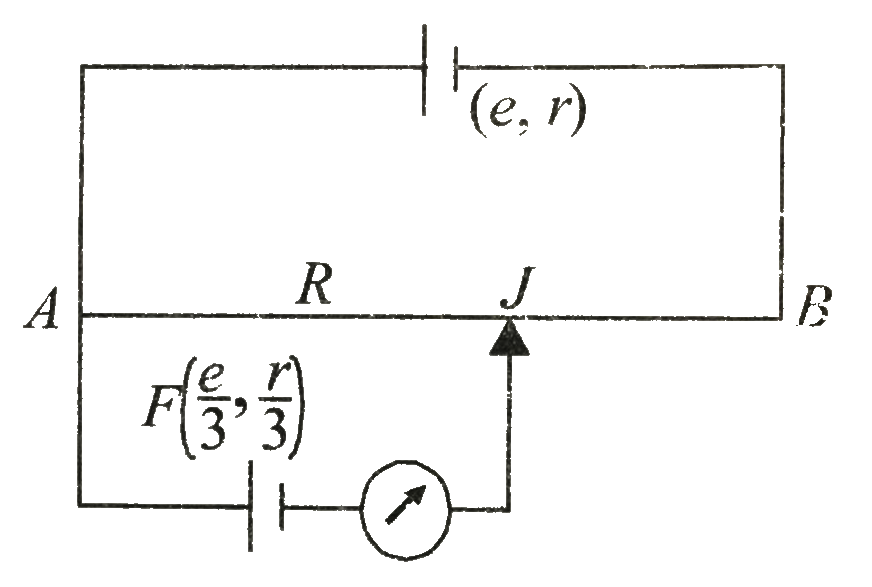
View SolutionFor the potentiometer arrangement shown in the figure, length of wire AB is 100 cm and its resistance is 9Ω. Find the length AC for which the galvanometer G will show zero deflection.
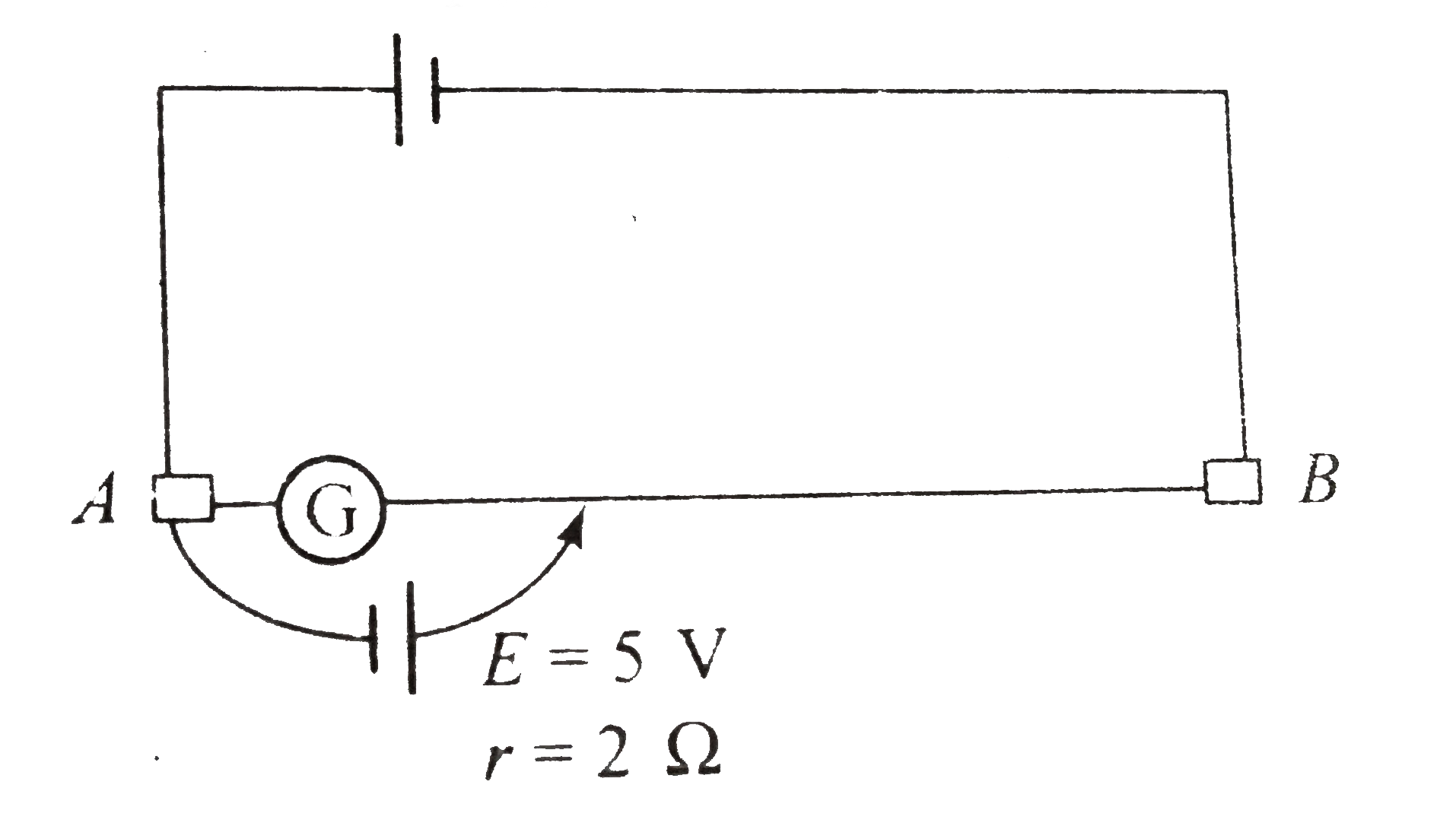
View SolutionThe potentiometer wire AB is 600 cm long.
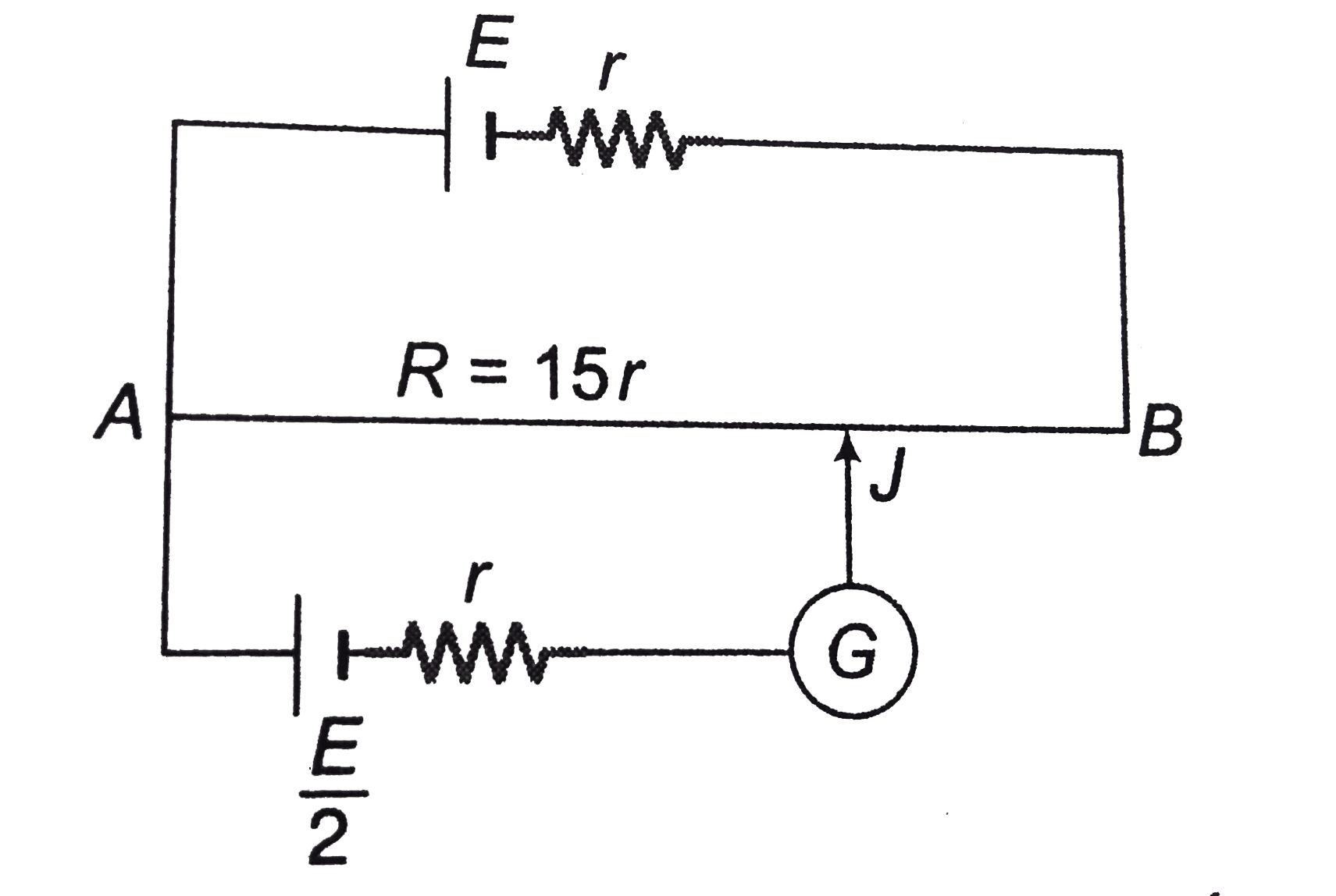 a. At what distance from A should be jockey J touch the wire to get zero deflection i the galvanometer.
a. At what distance from A should be jockey J touch the wire to get zero deflection i the galvanometer.
b. If the jockey touches the wire at a distance 560cm from A, what will be the current through the galvanometer.
View SolutionThe adjoining figure shows the connection of potentiometer experiment to determine internal resistance of a leclanche cell. When the cell is an open circuit the balancing length of the potentiometer wire is 3 .4m and on closing the key K2 the balancing length becomes 17.m. If the resistance R through which current is dream is 10Ω then the internal resistance of the cell is:
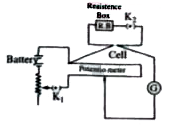
View SolutionIn a potentiometer arrangement, a cell of emf 1.25 V gives a balance point at 35.0 cm length of the wire. If the cell is replaced by another cell and the balance point shifts to 63.0 cm, what is the emf of the second cell ?
View SolutionIn a potentiometer arrangement, a cell of emf 2.25V gives a balance point at 30.0 cm length of the wire. If the cell is replaced by another cell and the balance point shifts to 60.0 cm, then what is the emf of the second cell?
View SolutionConsider the potentiometer circuit arranged as in figure. The potentiometer wire is 600cm long. At what distance from the point A should the jockey touch the wire to get zero deflection in the galvanometer? b) If the jockey touches the wire at a distance of 560cm from A, What will be the current in the galvanometer?
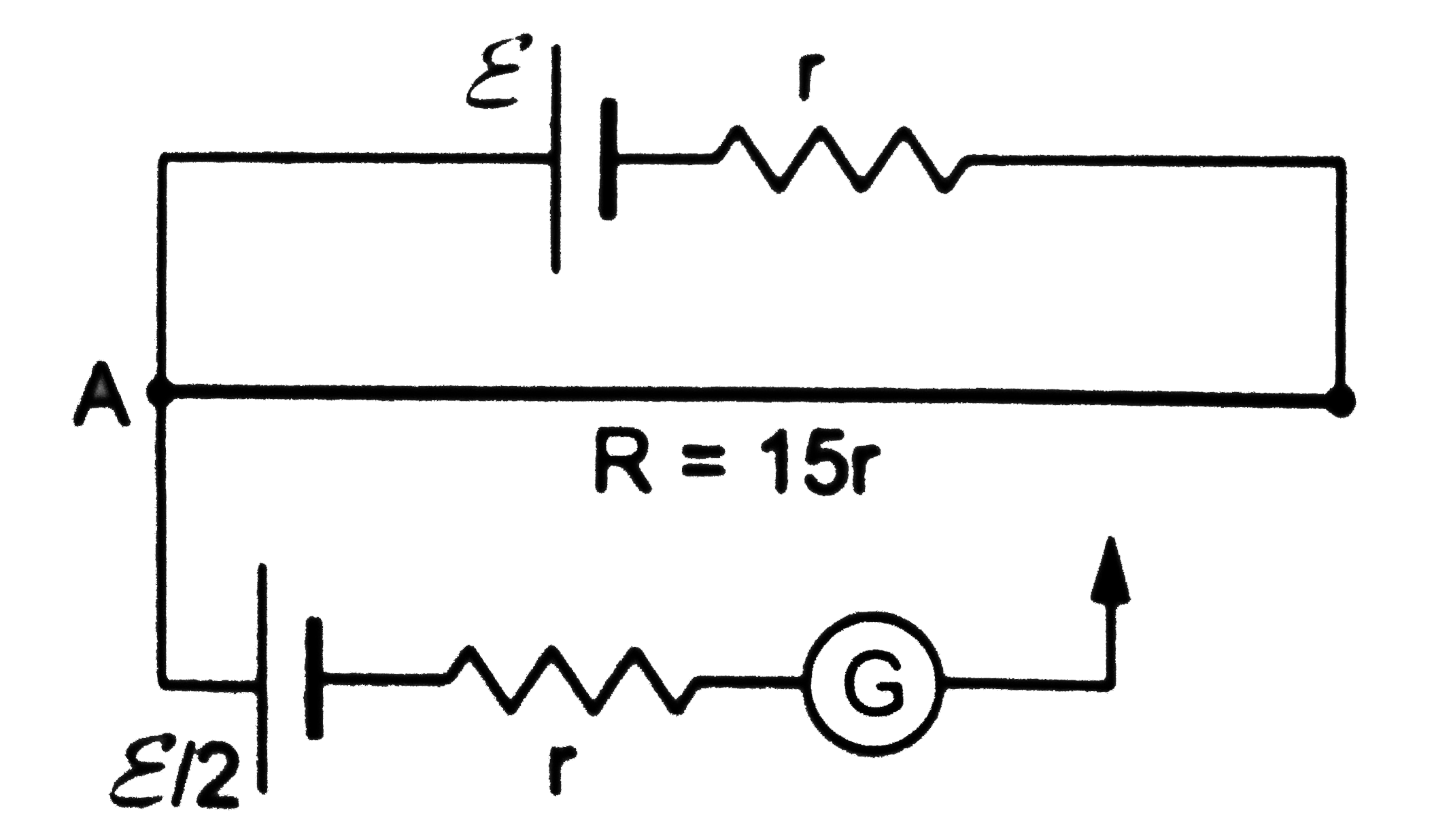
View SolutionIn a potentiometer arrangement a cell of emf 1.20V given a balance point at 30cm length of the wire. The cell a now replaced by another cell of unknown emf. The ratio of emfs of the two cells is 1.5, calculate the difference in the balancing length of the potentiometer wire in the two cases
View Solution
